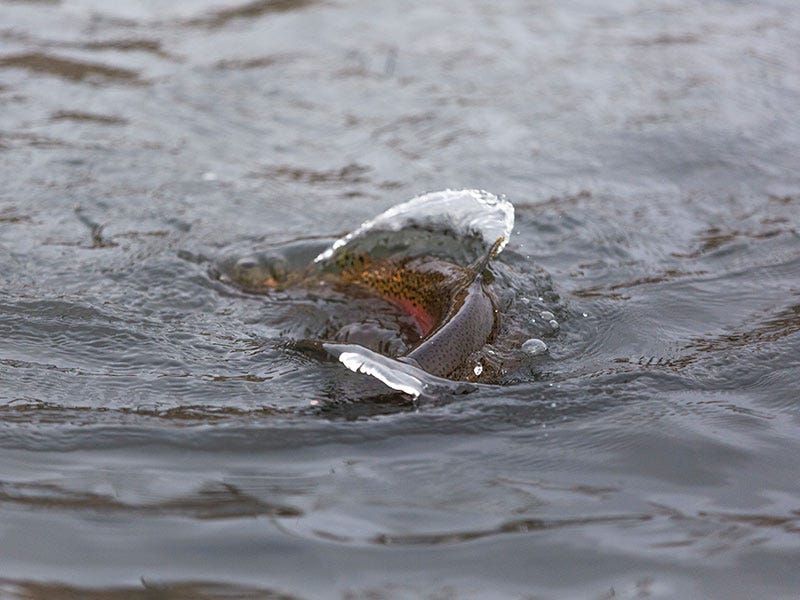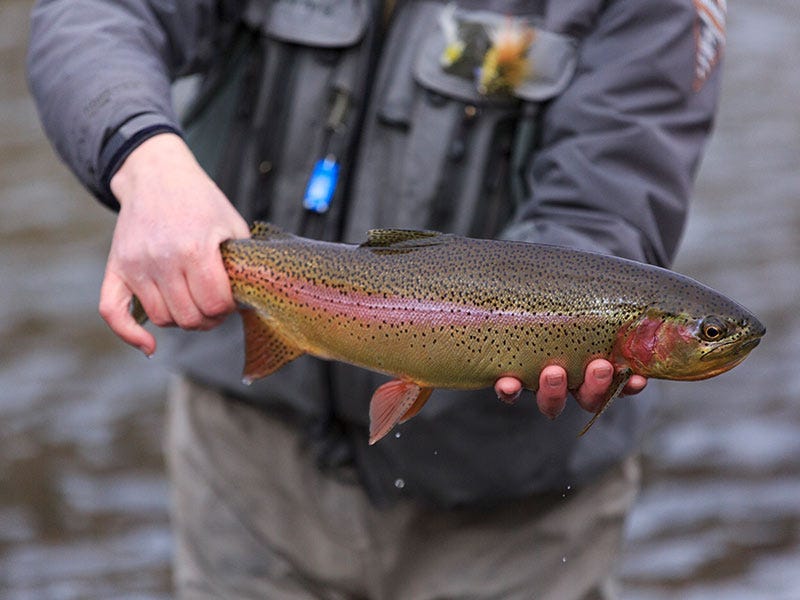Don’t Tread on Me

Do not wade over redds. Seems simple enough, right? There are a few key things to look for during the spring and fall spawn. Spring is fast approaching, and the fish are getting frisky.
Educate Yourself: How to Spot Redds
I fondly remember my time spent on the Great Lakes tributaries, fishing for lake run browns and rainbows. Often, you’d find large rainbows paired up in the spring. At a young age, we knew to never fish for these courting trout, however, we never knew what to look for when the fish weren’t there. It is important to stay vigilant for defining characteristics on the stream bottom. I’ve seen redds in many types of water, anywhere from inches to a few feet of water in varying speeds. However, a bulk of the redds were always in shallow tail-outs, or riffles. Fish that range from 14 inches or smaller look for pea-sized or smaller gravel. These redds are often in the shallowest waters adjacent to tail-out riffles. The larger fish around 16 to 30 inches will red in larger gravel, generally, quarter to half-dollar sized gravel. The larger gravel can resist faster current, so expect the redds closer to mid-stream. In places with large anadromous species like salmon and steelhead, it’s not uncommon to see fish digging and moving fist-sized cobble.
What freshwater species can you find in North Idaho? Read this.
What Does a Redd Look Like?
Now that we know what substrate and stream location fish choose to spawn in, what does a redd even look like? Redds are prepared by the female, or hen, by using her tail to flap away loose substrate and debris from the location she wants to lay her eggs as she awaits the male or buck. This creates a bowl-like depression in the streambed, normally with a small pile of gravel on the downstream end of the redd. If you are using a jet boat to access runs above riffles, be cautious of these rises (I’ve learned the hard way and have sucked gravel through a lower unit on humpy redds). The gravel on the bottom will appear very clean and sorted. All it takes is a good look before crossing or stepping into the water. In lake systems, redds appear as an almost perfect round bowl and are often deeper than river redds.
Where Not to Wade
Now that we know where fish spawn and what a redd looks like, how can we avoid them? It’s important to understand how water works. Wading above, over, and below a redd can have detrimental consequences for fertilized eggs. Wading too closely above a redd can send churning hydraulics downstream from you, potentially dislodging eggs from the redd and rocks. Wading below a redd will potentially dislodge eggs that made their way into the substrate downstream from where they were laid.
Basically, the biggest no-no of wading is stepping into, over, or frankly, anywhere close to the redd. This is where the largest concentration of eggs are. So, just don’t do it. Please! The big picture is, eggs that get released from the substrate and drift downstream will either be no longer viable or get eaten by other fish. Minimizing this will only benefit the recruitment of juveniles later on.
To Fish or Not to Fish
Obviously, fishing over paired fish is a no-no for many folks nowadays. Do we need to just stop fishing certain rivers because there are spawning fish present? This is the gray area that I don’t intend to wade too deeply into, pun intended. I do believe, however, if we educate ourselves and practice what we preach, we can be conscious of the fish spawning during specific times of the year. My solution is to totally avoid targeting spawning species and target non-spawning species away from likely spawning areas.
It's fly tying season. Have questions and want the best fly recipes - learn here.
Generally, good fishing can be found in deeper holes and runs far upstream or downstream of spawning grounds, and away from paired fish in the shallows. My advice is to use your best judgment and really focus on your own code of ethics as well as following any regulation passed down from your state fish and wildlife agency. Remember, the redds protect the eggs, and the eggs are the future generations of fish we all love to pursue.

